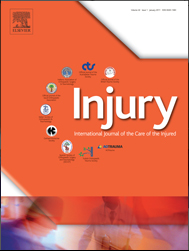
Foot & Ankle
Closed reduction and tibiotalocalcaneal nail versus ORIF for unstable ankle fracture
Injury. 2017 Feb;48(2):519-52487 elderly (>70 years of age) patients with an unstable ankle fracture were randomized to treatment through either closed reduction and intramedullary nail fixation, or open reduction and internal fixation using a plate and screws. Patients were assessed for the incidence of complications, length of stay, postoperative mobility status, and functional outcome on the Olerud-Molander score at 1 year postoperatively. Results demonstrated a significantly lower incidence of complications and shorter length of hospital stay in the nail group compared to the ORIF group. Postoperative mobility status and functional outcome did not significantly differ between groups.
Unlock the full article
Get unlimited access to OrthoEvidence with a free trial
Start TrialCritical appraisals of the latest, high-impact randomized controlled trials and systematic reviews in orthopaedics
Access to OrthoEvidence podcast content, including collaborations with the Journal of Bone and Joint Surgery, interviews with internationally recognized surgeons, and roundtable discussions on orthopaedic news and topics
Subscription to The Pulse, a twice-weekly evidence-based newsletter designed to help you make better clinical decisions
Exclusive access to original content articles, including in-house systematic reviews, and articles on health research methods and hot orthopaedic topics
Or continue reading this full article
Register Now

Subscribe to "The Pulse"
Evidence-Based Orthopaedics direct to your inbox.




































